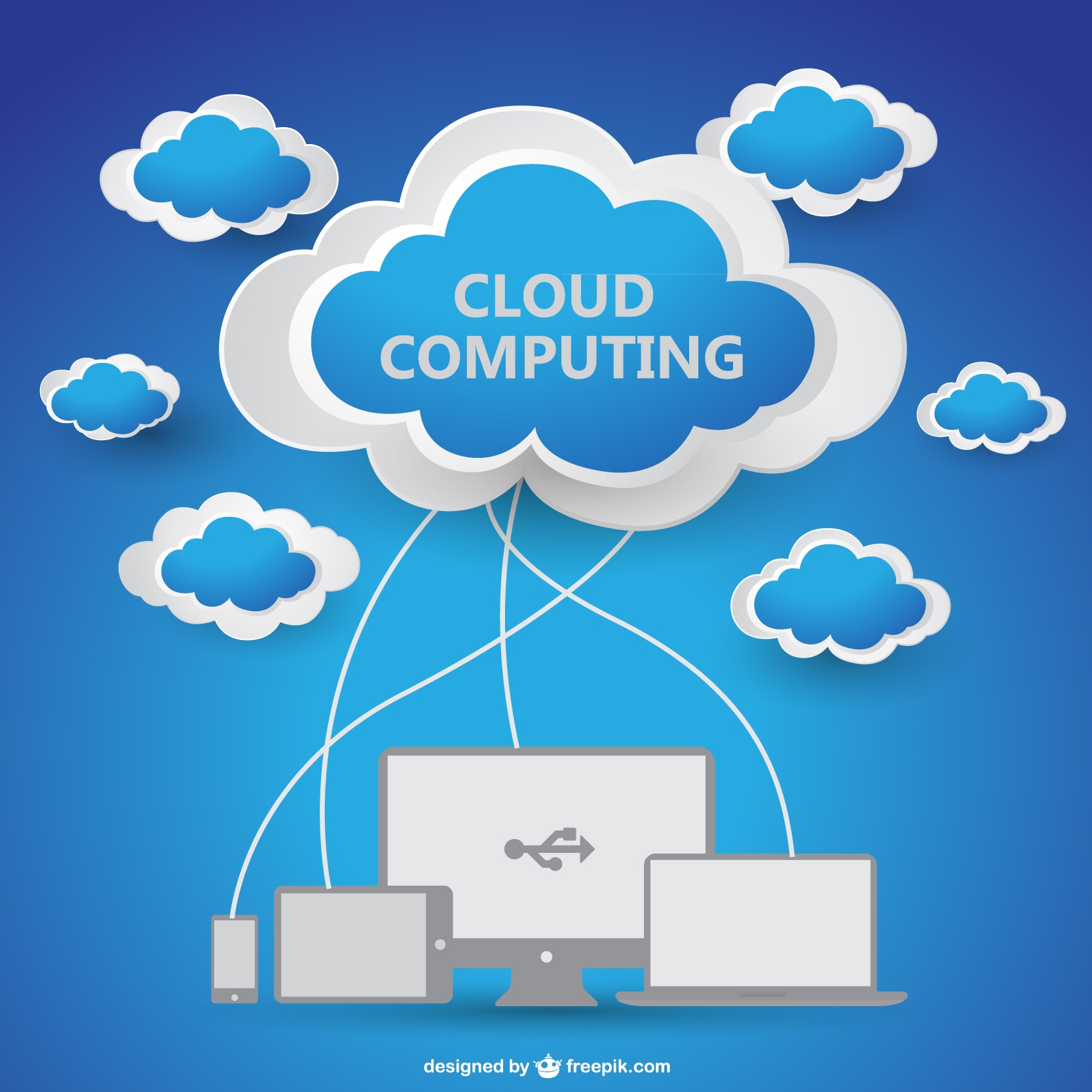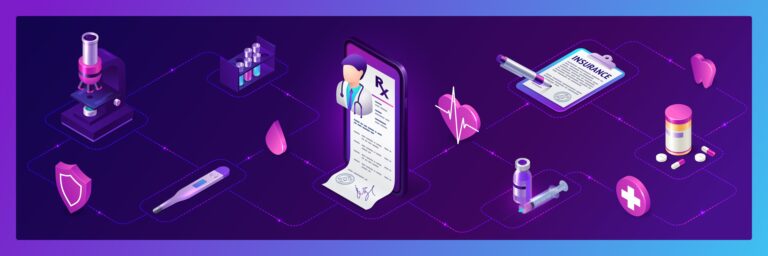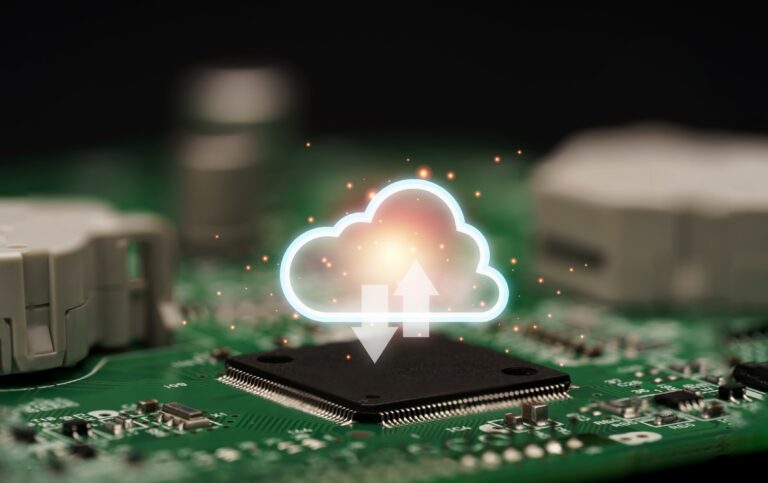With cloud computing and disruptive technologies such as artificial intelligence in the spotlight, businesses with legacy IT departments and on-premise servers are grappling with a challenging question: How do we modernize? To shed more light on these issues, we interviewed Denys Lukashevych, CEO at A-Dev. Denys is great at translating technical ideas into actionable insights for anyone, even those without a technical background.

Today in this blog post we would like to share Denys thoughts about what companies should do in order to grow efficiency and so using of cloud environments and artificial intelligence. Be it that you are just getting initiated with these technologies or you are also looking for ways to expand what you already built, read on — you will find a lot of useful advice from Denys, to hopefully make your journey smoother.
1. What is AI cloud computing?

Denys, we understand that AI cloud technology isn’t just a buzzword for A-Dev. What does it mean to your clients?
What is AI cloud technology? Cloud computing artificial intelligence is essentially the pairing of artificial intelligence with a secure cloud infrastructure. With the A-Dev we are developing a right environment for businesses to utilize top notch AI efficient systems with a low hardware investment.
A cloud infrastructure acts like a flexible playground for AI, allowing companies to scale their computational resources dynamically. We enable businesses to process massive datasets, run complex machine learning algorithms, and gain real-time insights without worrying about technical complexities.
It all comes down to many advantages for our clients, but number one is real-time data driven decision making. We can run monumental volumes of data very rapidly on our cloud platforms. It means enterprises can access actionable insights and arrive at right decision much quicker. It is even more important in fields such as finance, healthcare, and e-commerce, where a fraction of a second can have a significant impact.
With our AI cloud computing, our clients can scale their AI usage up or down to their liking and only pay for what they actually consume. We’re opening up powerful AI capabilities, making it possible for businesses of any size to leverage them. Not just tech giants.
Think of it like having a powerful, adaptable brain that you can rent by the hour. Our cloud infrastructure does the heavy lifting, while businesses focus on using those insights to drive innovation and growth.
Is a cloud environment the same as AI?

Some confuse AI with cloud computing. How would you distinguish the two, in relation to your work at A-Dev?
While AI is definitely not the same as cloud computing, they make a pretty good pair. Let me break it down in simple terms:
Cloud computing is like your mega awesome computer that you can use through the internet. A cloud is a virtual data center where we save and process data without having to buy expensive hardware. Consider it as a configurable virtual-office space that expands and contracts as necessary.
AI, on the other hand, is the brain that is able to assess all that data and make better decisions. The sort of tech that can learn based on information, spot patterns, and make predictions.
At A-Dev, we use cloud computing to give our clients a flexible, scalable platform. This is where we keep their data there and run their applications. We then use AI to get smart insights from that data and help businesses make better decisions and automate tasks. That is to say, although they are different, cloud computing and AI are two peas in a pod. The cloud provides the room and power to let AI work its magic, and at the same time, AI plays a critical role in making cloud services work smarter and better. And together they are enabling organizations of all sizes to do things that only large enterprises with large IT budgets could do before.
How do AI models and cloud environments work together?

In your experience, how do AI and cloud computing complement each other in the solutions A-Dev provides?
In my experience at A-Dev, AI and cloud computing work together like a well-oiled machine. Here’s how they complement each other:
AI models demand compute resources when applied to large datasets in order to be useful. This, of course, is where cloud computing comes into its own. Cloud environments yield the massive computational power and scalability AI requires to digest big data sets.
For example, when we’re working on a project where it requires complex AI models to be trained, we can simply scale our cloud resources up and let them do the heavy lifting. This means our clients do not need to buy expensive machines that can spend most of the time unused.
On the other hand, AI enhances the intelligence and efficiency of cloud services. We use AI services provided by leading cloud providers to optimize how we allocate cloud resources, ensuring our clients only pay for what they need. AI in cloud also allows us to machine learn on many of the cloud-management tasks we used to have to do manually, which reduces errors and allows our humans to focus on more strategic work. This synergy between AI and cloud providers’ infrastructure enables us to deliver more value to our clients, making cloud services smarter and more cost-effective.
One of the coolest things we’ve seen is the way this combination allows for real-time data processing and decision making. Our customers can sift through millions of records and deliver actionable insights in almost real-time. This is a game changer for companies that rely on making quick, data-driven decisions.
So, the bottom line is, cloud platforms fuel AI services that is required for magic to happen, and AI makes the cloud services smart and cost-efficient. It’s a win-win that enables us to provide increased value to our clients.
What are some applications of AI in cloud computing that A-Dev focuses on?

What specific applications of AI in cloud computing does A-Dev specialize in or find most impactful?
At A-Dev, we focus on leveraging the capabilities of leading cloud providers to deliver impactful AI solutions. For instance, in one of our significant projects for a top Ukrainian bank, we utilized AWS as our primary cloud service provider to build a robust machine learning and data analytics solution. This project exemplifies how we integrate various technologies like Apache Airflow, Kubernetes, Spark, and MinIO within the cloud infrastructure to create scalable and efficient systems.
One of our large projects was for a leading Ukrainian bank. They were looking to stay ahead in the digital game when we built them a cloud-based machine learning algorithms and data analytics solution. Here’s how we made it happen with a combination of AWS, Apache Airflow, Kubernetes, Spark and MinIO.
What I believe to be really neat about this setup is how all of this ties together. Airflow, which is orchestration platform to author, schedule and monitor workflows. Kubernetes gives us the flexibility to scale our resources up or down as needed. Apache Spark allows us to process large data volumes faster. And MinIO provides a robust, S3-compatible object storage that can handle massive datasets. With this tech stack, we built some cool stuff. To illustrate, we adopted an artificial intelligence-based Know Your Customer (KYC) solution. This showed how the bank had increased customer acquisition but also improved risk management. We are also excited about predictive modeling as an application. Their predictive models are based on hundreds of thousands of examples in banks’ data. This helps the bank deliver better decisions and personalized services.
We also redesigned their mobile app and turn it into a money making channel by adding AI features that customers are looking to use. We also managed to release five new AI and machine learning powered solutions for their banking services within six months which was extraordinary indeed. We can roll out new features and version updates significantly quicker with AI in cloud than with anything we can do in-house. And these aren’t tech-for-tech’s-sake projects. They’re producing real business outcomes. They attracted a wave of new customers, and they have a more stable foundation from which to grow for years to come.
While our current projects have predominantly utilized AWS, we recognize the potential of other cloud service providers like Oracle Cloud Infrastructure as well. OCI offers powerful capabilities for AI workloads and can be an excellent choice for organizations looking to leverage AI and machine learning in their cloud platforms. Ultimately, our goal is to use these advanced technologies to solve real business problems and drive growth. Whether it be using AWS, Oracle Cloud Infrastructure or other cloud providers, it is about leveraging AI in cloud architectures to deliver real value to strengthen our customers. This response maintains focus on A-Dev’s primary use of AWS while also acknowledging Oracle Cloud Infrastructure can be recommended to customers for different projects which are having different client need.
So yeah, this is just some of the stuff that we are doing with AI in cloud computing. At the end of the day, how effective these cutting-edge technologies are is only how well they address a business problem and create value. Our solutions are driven by top cloud providers, making it scalable and flexible so businesses can innovate faster rather than having to deal with the infrastructure. By utilizing cloud platforms this way we are able to provide tangible business results, generate a customer basis and establish a ground for long-lasting growth.
What are the advantages, challenges, and best practices of using AI in the cloud?

What are the benefits and challenges of adding AI to the cloud based on what you’ve seen, and how can companies incorporate best practices?
You know, integrating AI into cloud services is like adding a turbocharger to an already powerful engine. It’s exciting stuff, but it comes with its own set of challenges. Let me break it down for you in simple terms:
So the good news is that AI is like having a genius security guard in the cloud. Pretty cool, it can detect real-time threats. It is also extremely effective in reducing costs by automating many routine tasks and ensuring efficient resource utilization.
That’s part of what I love about AI in the cloud, that it can process huge volumes of information and offer us insights we would find difficult to discover ourselves. It is as if you have a team of data analysts working round the clock.
It’s not all smooth sailing, though. And data privacy remains a huge issue. If you have sensitive information in the cloud that you’re processing with AI, then you need to be even more cautious. There are also real concerns about how that data is treated and who sees it. And trying to locate people who truly understand AI and the cloud? That can be tough.
AI Data Management can be a pain, too. It’s on the order of trying to keep a library in order when new books are continuously flooding in. Because AI is only as good as the data you throw in there, you have to make sure your data is clean and organized.
Other common pain point we observe is poor network connectivity. If your connection is unreliable, it hampers the effectiveness of any AI applications that are dependent on the cloud. Latency and slow speeds can affect performance, particularly for real-time applications where every micro-second is valuable.
But when people ask me about best practices, I always tell our clients, Just start small. Don’t try to boil the ocean. Identify a single problem you want to target and build from it. Security is crucial too. We put all sorts of advanced encryption and access controls in place to protect data. And you have to keep your AI models up to date — it is like software — you have to patch and update on a regular basis.
By all means, integrating AI algorithms on top of your cloud services is a long walk. Sure, it requires time and effort, but get it right and it can truly set your business apart. So just keep in mind to take things one step at a time, and that it’s okay to ask for help along the way.
How can AI and cloud analytics work together to enhance predictive maintenance in industrial settings?

In what ways can AI-driven systems improve predictive maintenance in industrial environments through cloud-based analytics?
You know, the combination of AI and cloud analytics is really transforming how we approach predictive maintenance in industrial settings. Allow me to explain how they work in unison towards operational efficiency and reduced downtime.
First off, AI-driven systems excel at analyzing vast amounts of data collected from different sites and sources, such as IoT sensors on machines. These sensors provide continuous monitoring of equipment health by monitoring key performance indicators including temperature, vibration, and pressure. Using cloud analytics, we can store this data and process it in real-time while also making it accessible anywhere. So, without being physically present on-site, and with monitoring, maintenance teams can get insights on equipment status.
Here is where AI algorithms come into play. By examining historical data while monitoring live sensor data, they can recognize trends and spot deviations in the readings that could signal imminent failure. So if a machine develops a slight vibration that exceeds the data within the system, the AI can flag this, as that may be a precursor to a breakdown. This predictive process enables teams to take skills associated with maintenance based on planning during off hours to prevent any major disruptions in procedures.
Besides, the cloud offers the required scalability to process the large amounts of data produced in industrial plants. Cloud computing is capable of rapidly scaling up resources when additional sensors are added or when equipment becomes more complex, without the need for a capital investment in hardware.
Another main advantage is the possibility to deploy machine learning models that can learn over time. Because these models learn from the incoming data, they’re able to make more accurate predictions about when to perform maintenance based on historical performance and present operating conditions. This learning aspect is a continuous process that makes our predictive analytics models much accurate and effective.
Cloud analytics also provide the ability to present data via dashboards and reports, which helps decision-makers interpret equipment health in a manner to steer their course of action. The visibility enables maintenance crews to respond quickly when problems are identified, allowing needed repairs to occur before costly downtime results.
AI algorithms help organizations boost their operational efficiency, integrating with cloud analytics to provide real-time monitoring and predictive analytics! They can minimize unpredicted downtimes, maximize the lifespan of their apparatus and in result save cost—to continue to be competitive in their field. It is basically about leveraging technology for being proactive towards looming problems and making sure the wheels run well in all sectors.
How to unleash the potential of cloud-based AI?

What advice would you give organizations looking to maximize their use of cloud-based AI technologies?
There are a few things that organizations really should be aware of when it comes to taking advantage of cloud-based AI technologies.
To begin with, it is at must to know what is your end goal. Don’t jump into the AI bandwagon just because it’s the latest trend. Consider what particular challenge you are hoping to address, what will be improved. That way, your efforts will be concentrated in the areas where they are most needed.
Next, you’ve got to pay attention to your data. AI is only as good as the data you feed it, so invest in managing data quality. Several fantastic AI-based tools can assist with this. For example, we’ve seen systems that can automatically detect anomalies and clean up data in real-time. It’s pretty impressive stuff. Scale is not to be overlooked. The biggest benefit of cloud-based AI is the ability to scale up or down egg: on-demand. Be sure to take advantage of that flexibility to do right by your resources and your costs.
Data security is another big one. Sensitive data in the cloud is an area that makes you extremely cautious. Investigate AI-powered data security tools to facilitate detection and prevention of threats in real-time. And there, you might want to add some smart automation.
AI frees up your team to do more strategic work by doing routine tasks. That’s definitely going to drive productivity everywhere. And here’s where generative AI comes into play—it opens up new possibilities for content creation and innovation. Whether you’re looking to generate creative marketing materials or develop new product designs, generative AI can provide fresh insights and automate creative processes.
Lastly, keep in mind that this is a continuous process. Continue monitoring your AI systems, learn from the outcomes and also be prepared to make changes. AI is rapidly evolving so being flexible but open to new developments is important.
These strategies will really help organizations to unlock the true potential of the cloud-based AI. This is all about being clever, strategic, and always having a sharp eye on how these technologies can drive real value for your business.
Final Thoughts
As we wrap up our conversation, what final thoughts would you like to share about the integration of AI and cloud computing?
Thank you for the engaging discussion today. It’s clear that the integration of AI and cloud computing is not just a trend; it’s a fundamental shift that’s reshaping how businesses operate. These technologies can be used to enable organizations to realise some of the most profound efficiency and innovations that might ever be possible.
If there’s one takeaway I want to emphasize , however, it’s that you should be very strategic about this integration. Be clear on your business objectives, focus on data quality, hire talent where you need it, and address security. Collectively, these elements are essential in successfully leveraging the power of AI in the cloud environments. My hope is organizations stay wise to adaptation navigating this space. I am very optimistic for the future as long as companies are open to exploring these technologies and watch how they will further innovate and help almost all sectors of the economy generate value.





